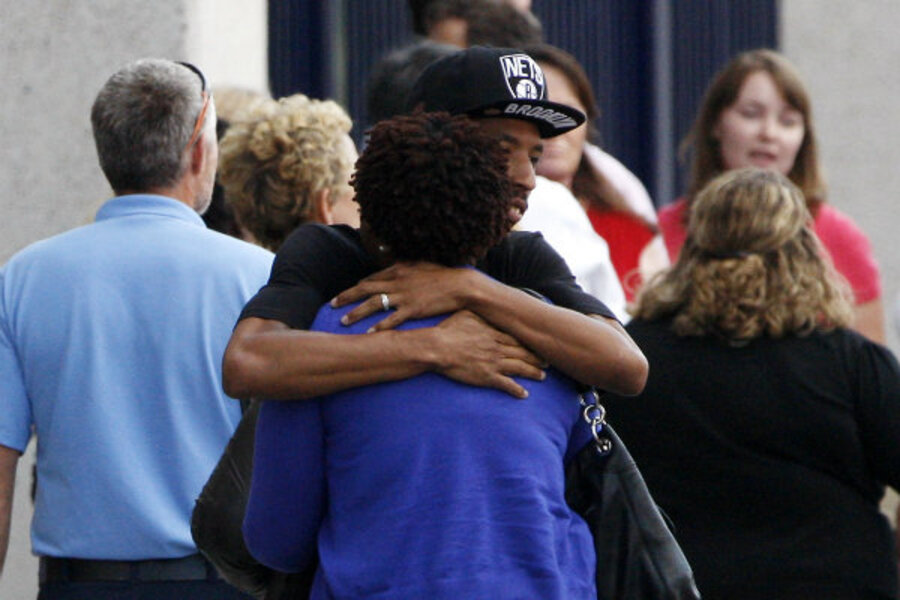Washington Navy Yard shooting: Don't jump to conclusions and remember context
Loading...
| Washington
Monday morning, the world got news of what has become an all-too-common occurrence in modern America: a shooting spree. Officials now say at least one gunmen killed 12 people and wounded several others at the Washington Navy Yard.
Residents of Washington, DC are certainly not immune to gun violence; individual shootings happen too frequently here. But a mass shooting is a violating, disruptive event. While we still know only basic-level information about this event, we must refrain from jumping to conclusions about its cause.
I lived through the 2002 “Beltway sniper” attacks. The perpetrators killed people at gas stations near my house, at a Home Depot on my commute to work. In total, they killed 10 innocents over 20 days of assassination. Those attacks hold a lesson for us now as we sort through the aftermath and piece together information from the Washington Navy Yard shooting.
With the DC snipers, speculation ran rampant. The attacks took place during the heady days after planes had crashed into the Pentagon and the World Trade Center. People assumed the sniping was an act of terrorism. The two DC snipers, John Allen Muhammed and his young protégé Lee Boyd Malvo, had at best vague motives: They espoused ideas related to jihad, but Mr. Muhammed had also threatened to murder his wife.
The lesson for both media and citizens hungry for information: Don’t jump to conclusions about motive or circumstances.
Of course, America is more in tune to gun rampages than 11 years ago when the DC sniper attacks took place. The massacres at an elementary school in Newtown, Conn., a movie theater in Aurora, Colo., and a military base in Ft. Hood, Texas, have made most Americans painfully aware of the potential for a deranged shooting spree to take place almost anywhere.
But information is still relatively scarce about the killings – and killers – in Washington today. The area the shooters attacked is technically a military base, but the buildings house mostly civilian agencies. Law enforcement is now searching for an additional suspect who is at large; a first suspect, identified as Aaron Alexis, was killed at the scene. If the shooting did, in fact, involve multiple shooters, that suggests that this is not just a case of a lone wolf but would suggest coordination and deliberation.
But we just don’t know. As with the Boston Marathon Bombings, the early reports are contradictory and often wrong. We should try our best, no matter the death toll, to avoid drawing conclusions too early. The rush to be first with the news always places incorrect information in the public, and we ultimately do not benefit from such a race to be first.
In these first few hours after the tragedy, then, instead of rushing to figure out every detail before the police can explain their investigation, we must take a step back and wait patiently for credible information. And maybe we should instead pause and wonder about why such things are happening and how we could prevent them in the future.
If this is an act of terrorism, how can America better combat the diffuse threat of individuals – even Americans – becoming radicalized and perpetrating violence on US soil? If this is yet another shooting rampage by disturbed individuals with grievances or mental illness, how can we examine once more issues of mental health, gun control and access, and public safety?
In the meantime, Americans will mourn those who have passed, the FBI will investigate, the sidewalks and hallways will once again be washed of spilled blood. And we will – we must – carry on with our days, waiting and reflecting with wisdom, rather than fearful speculation.
Joshua Foust is a freelance journalist with a background in counterterrorism and foreign policy. His website is joshuafoust.com, and you can follow him on Twitter @joshuafoust.







